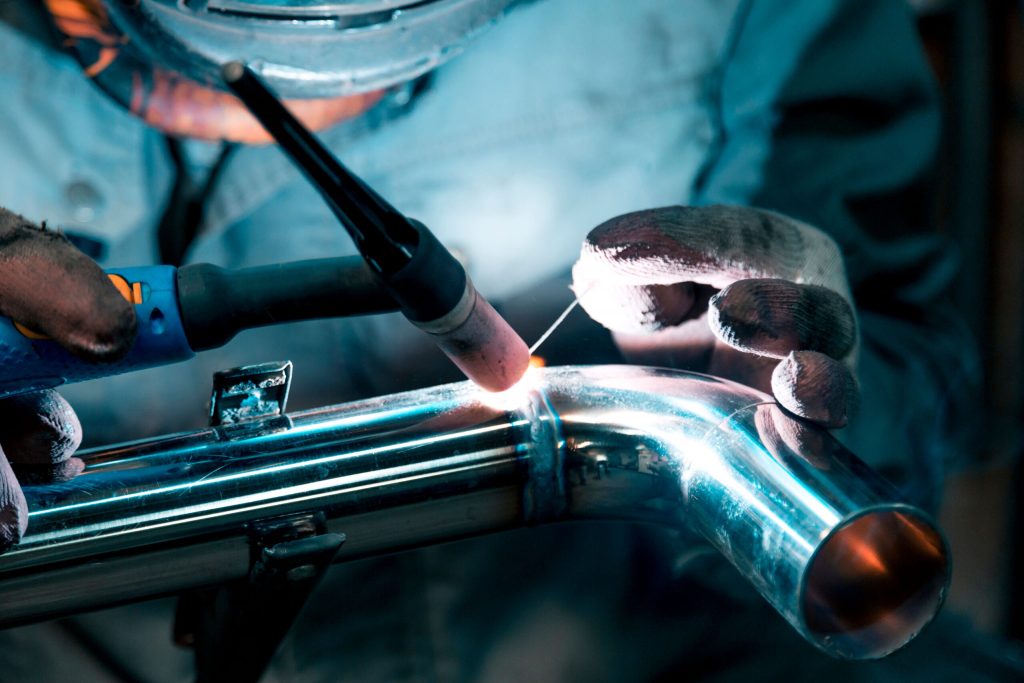TIG welding is a versatile and precise process that welders use to create quality welds. Apart from joining metals using non-consumable tungsten electrodes, it can also protect a welding area against contamination from argon and other inert gases. This versatility and complete control allow tungsten inert gas welding to join different metals. These metals, including stainless steel, aluminum, and copper, are the main selling points of this process.

Working Principle of TIG Welding
If you have ever used an oxy-acetylene torch to weld, it will be easy to weld using TIG machines. The production welding process using TIG welders relies on electric torches, and the welder’s hands feed filler rods into a molten puddle. The capability to soft stop and soft start makes the process unique from other welding types. Some welders like accelerator pedal to control heat as they work on a bench, whereas others prefer using fingertip remotes with a torch. The remote often adjusts heat when welding.
Components of TIG Welders
Different components of TIG welding include the following:
- Filler material – When welding a thin sheet in TIG welding, you will need a filler material. But for a thicker weld, you must manually feed filler material into a weld zone as rods. These rods will act as additional materials and even strengthen your weld.
- Shielding gas supply system – Welders use argon or any other inert gas as a shielding gas. The function of this gas is to protect welds against oxidation by simply preventing the ingress of oxygen. Your choice of gas depends on the specific metals you want to weld.
- TIG torch—This is an essential component in TIG welders. It consists of three major parts: the nozzle, collets, and tungsten electrodes.
- Power source—The power source is an important unit in TIG welders. Welders use DC and AC sources of power, but DC current is mostly used for materials like nickel alloys, titanium, copper, mild steel, and stainless steel.
Applications
According to experts at Micro Weld, welders apply the TIG welding process in all industries, but it is more applicable in high-quality welding. When it comes to manual welding, a small arc is important for controlled penetration and thin sheet materials. Since the deposition rate can be low, welders can use MIG or MMA for thicker materials. The TIG welding process is also used in a mechanized system, either with a filler wire or autogenously.
Benefits
There are numerous benefits of TIG welding. First, welders can do TIG welding with or without a filler metal. Plus, they can control other variables, such as heat input. Second, TIG welding often produces stronger and better results. This is because the process goes deeper and is highly resistant to corrosion. Last but not least, the TIG welding process doesn’t generate spatters, thus eliminating the importance of cleaning up the space later.
Drawbacks
Everything that has benefits also has drawbacks. Like other welding processes, TIG welding has disadvantages, too. These disadvantages include the following:
- Lower deposition rate—The TIG welding process has lower deposition rates than other processes, which makes projects take more time.
- Learning curve – Some welders consider this process challenging to master and learn, thus requiring you to have more skills.
- Higher costs—Because the deposition rate is lower and the process cannot be automated, TIG welding’s cost may increase more quickly than that of other welding processes.
The bottom line is that the TIG welding process remains the most effective and versatile of all the processes. Because of that, you can use it to deliver the highest quality and neatest welds. But still, having skills/experience and investing in quality machines is key.